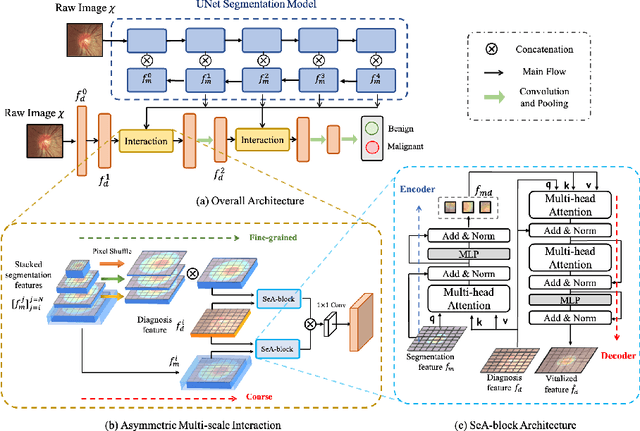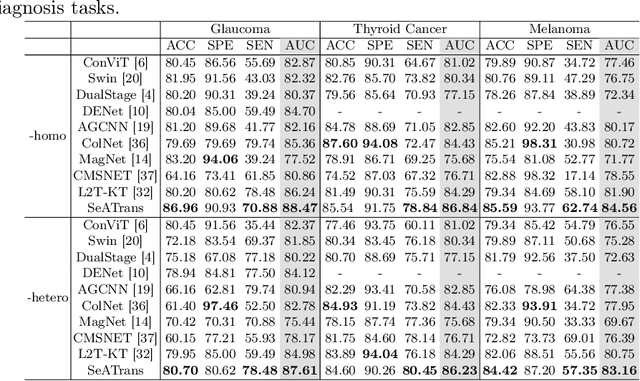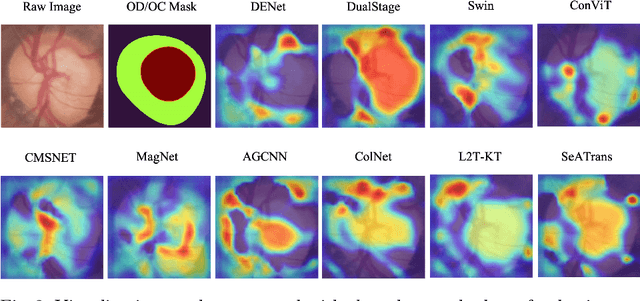Yehui Yang
DATE: Dynamic Absolute Time Enhancement for Long Video Understanding
Sep 11, 2025Abstract:Long video understanding remains a fundamental challenge for multimodal large language models (MLLMs), particularly in tasks requiring precise temporal reasoning and event localization. Existing approaches typically adopt uniform frame sampling and rely on implicit position encodings to model temporal order. However, these methods struggle with long-range dependencies, leading to critical information loss and degraded temporal comprehension. In this paper, we propose Dynamic Absolute Time Enhancement (DATE) that enhances temporal awareness in MLLMs through the Timestamp Injection Mechanism (TIM) and a semantically guided Temporal-Aware Similarity Sampling (TASS) strategy. Specifically, we interleave video frame embeddings with textual timestamp tokens to construct a continuous temporal reference system. We further reformulate the video sampling problem as a vision-language retrieval task and introduce a two-stage algorithm to ensure both semantic relevance and temporal coverage: enriching each query into a descriptive caption to better align with the vision feature, and sampling key event with a similarity-driven temporally regularized greedy strategy. Our method achieves remarkable improvements w.r.t. absolute time understanding and key event localization, resulting in state-of-the-art performance among 7B and 72B models on hour-long video benchmarks. Particularly, our 7B model even exceeds many 72B models on some benchmarks.
Towards a Multimodal Large Language Model with Pixel-Level Insight for Biomedicine
Dec 12, 2024Abstract:In recent years, Multimodal Large Language Models (MLLM) have achieved notable advancements, demonstrating the feasibility of developing an intelligent biomedical assistant. However, current biomedical MLLMs predominantly focus on image-level understanding and restrict interactions to textual commands, thus limiting their capability boundaries and the flexibility of usage. In this paper, we introduce a novel end-to-end multimodal large language model for the biomedical domain, named MedPLIB, which possesses pixel-level understanding. Excitingly, it supports visual question answering (VQA), arbitrary pixel-level prompts (points, bounding boxes, and free-form shapes), and pixel-level grounding. We propose a novel Mixture-of-Experts (MoE) multi-stage training strategy, which divides MoE into separate training phases for a visual-language expert model and a pixel-grounding expert model, followed by fine-tuning using MoE. This strategy effectively coordinates multitask learning while maintaining the computational cost at inference equivalent to that of a single expert model. To advance the research of biomedical MLLMs, we introduce the Medical Complex Vision Question Answering Dataset (MeCoVQA), which comprises an array of 8 modalities for complex medical imaging question answering and image region understanding. Experimental results indicate that MedPLIB has achieved state-of-the-art outcomes across multiple medical visual language tasks. More importantly, in zero-shot evaluations for the pixel grounding task, MedPLIB leads the best small and large models by margins of 19.7 and 15.6 respectively on the mDice metric. The codes, data, and model checkpoints will be made publicly available at https://github.com/ShawnHuang497/MedPLIB.
A Refer-and-Ground Multimodal Large Language Model for Biomedicine
Jun 26, 2024Abstract:With the rapid development of multimodal large language models (MLLMs), especially their capabilities in visual chat through refer and ground functionalities, their significance is increasingly recognized. However, the biomedical field currently exhibits a substantial gap in this area, primarily due to the absence of a dedicated refer and ground dataset for biomedical images. To address this challenge, we devised the Med-GRIT-270k dataset. It comprises 270k question-and-answer pairs and spans eight distinct medical imaging modalities. Most importantly, it is the first dedicated to the biomedical domain and integrating refer and ground conversations. The key idea is to sample large-scale biomedical image-mask pairs from medical segmentation datasets and generate instruction datasets from text using chatGPT. Additionally, we introduce a Refer-and-Ground Multimodal Large Language Model for Biomedicine (BiRD) by using this dataset and multi-task instruction learning. Extensive experiments have corroborated the efficacy of the Med-GRIT-270k dataset and the multi-modal, fine-grained interactive capabilities of the BiRD model. This holds significant reference value for the exploration and development of intelligent biomedical assistants.
SegICL: A Universal In-context Learning Framework for Enhanced Segmentation in Medical Imaging
Apr 02, 2024Abstract:Medical image segmentation models adapting to new tasks in a training-free manner through in-context learning is an exciting advancement. Universal segmentation models aim to generalize across the diverse modality of medical images, yet their effectiveness often diminishes when applied to out-of-distribution (OOD) data modalities and tasks, requiring intricate fine-tuning of model for optimal performance. For addressing this challenge, we introduce SegICL, a novel approach leveraging In-Context Learning (ICL) for image segmentation. Unlike existing methods, SegICL has the capability to employ text-guided segmentation and conduct in-context learning with a small set of image-mask pairs, eliminating the need for training the model from scratch or fine-tuning for OOD tasks (including OOD modality and dataset). Extensive experimental validation of SegICL demonstrates a positive correlation between the number of prompt samples and segmentation performance on OOD modalities and tasks. This indicates that SegICL effectively address new segmentation tasks based on contextual information. Additionally, SegICL also exhibits comparable segmentation performance to mainstream models on OOD and in-distribution tasks. Our code will be released soon.
An Embeddable Implicit IUVD Representation for Part-based 3D Human Surface Reconstruction
Jan 30, 2024Abstract:To reconstruct a 3D human surface from a single image, it is important to consider human pose, shape and clothing details simultaneously. In recent years, a combination of parametric body models (such as SMPL) that capture body pose and shape prior, and neural implicit functions that learn flexible clothing details, has been used to integrate the advantages of both approaches. However, the combined representation introduces additional computation, e.g. signed distance calculation, in 3D body feature extraction, which exacerbates the redundancy of the implicit query-and-infer process and fails to preserve the underlying body shape prior. To address these issues, we propose a novel IUVD-Feedback representation, which consists of an IUVD occupancy function and a feedback query algorithm. With this representation, the time-consuming signed distance calculation is replaced by a simple linear transformation in the IUVD space, leveraging the SMPL UV maps. Additionally, the redundant query points in the query-and-infer process are reduced through a feedback mechanism. This leads to more reasonable 3D body features and more effective query points, successfully preserving the parametric body prior. Moreover, the IUVD-Feedback representation can be embedded into any existing implicit human reconstruction pipelines without modifying the trained neural networks. Experiments on THuman2.0 dataset demonstrate that the proposed IUVD-Feedback representation improves result robustness and achieves three times faster acceleration in the query-and-infer process. Furthermore, this representation has the potential to be used in generative applications by leveraging its inherited semantic information from the parametric body model.
SynFundus: Generating a synthetic fundus images dataset with millions of samples and multi-disease annotations
Dec 01, 2023Abstract:In the field of medical imaging, the scarcity of large-scale datasets due to privacy restrictions stands as a significant barrier to develop large models for medical. To address this issue, we introduce SynFundus-1M, a high-quality synthetic dataset with over 1 million retinal fundus images and extensive disease and pathologies annotations, which is generated by a Denoising Diffusion Probabilistic Model. The SynFundus-Generator and SynFundus-1M achieve superior Frechet Inception Distance (FID) scores compared to existing methods on main-stream public real datasets. Furthermore, the ophthalmologists evaluation validate the difficulty in discerning these synthetic images from real ones, confirming the SynFundus-1M's authenticity. Through extensive experiments, we demonstrate that both CNN and ViT can benifit from SynFundus-1M by pretraining or training directly. Compared to datasets like ImageNet or EyePACS, models train on SynFundus-1M not only achieve better performance but also faster convergence on various downstream tasks.
Multi-rater Prism: Learning self-calibrated medical image segmentation from multiple raters
Dec 01, 2022



Abstract:In medical image segmentation, it is often necessary to collect opinions from multiple experts to make the final decision. This clinical routine helps to mitigate individual bias. But when data is multiply annotated, standard deep learning models are often not applicable. In this paper, we propose a novel neural network framework, called Multi-Rater Prism (MrPrism) to learn the medical image segmentation from multiple labels. Inspired by the iterative half-quadratic optimization, the proposed MrPrism will combine the multi-rater confidences assignment task and calibrated segmentation task in a recurrent manner. In this recurrent process, MrPrism can learn inter-observer variability taking into account the image semantic properties, and finally converges to a self-calibrated segmentation result reflecting the inter-observer agreement. Specifically, we propose Converging Prism (ConP) and Diverging Prism (DivP) to process the two tasks iteratively. ConP learns calibrated segmentation based on the multi-rater confidence maps estimated by DivP. DivP generates multi-rater confidence maps based on the segmentation masks estimated by ConP. The experimental results show that by recurrently running ConP and DivP, the two tasks can achieve mutual improvement. The final converged segmentation result of MrPrism outperforms state-of-the-art (SOTA) strategies on a wide range of medical image segmentation tasks.
ExpNet: A unified network for Expert-Level Classification
Nov 29, 2022



Abstract:Different from the general visual classification, some classification tasks are more challenging as they need the professional categories of the images. In the paper, we call them expert-level classification. Previous fine-grained vision classification (FGVC) has made many efforts on some of its specific sub-tasks. However, they are difficult to expand to the general cases which rely on the comprehensive analysis of part-global correlation and the hierarchical features interaction. In this paper, we propose Expert Network (ExpNet) to address the unique challenges of expert-level classification through a unified network. In ExpNet, we hierarchically decouple the part and context features and individually process them using a novel attentive mechanism, called Gaze-Shift. In each stage, Gaze-Shift produces a focal-part feature for the subsequent abstraction and memorizes a context-related embedding. Then we fuse the final focal embedding with all memorized context-related embedding to make the prediction. Such an architecture realizes the dual-track processing of partial and global information and hierarchical feature interactions. We conduct the experiments over three representative expert-level classification tasks: FGVC, disease classification, and artwork attributes classification. In these experiments, superior performance of our ExpNet is observed comparing to the state-of-the-arts in a wide range of fields, indicating the effectiveness and generalization of our ExpNet. The code will be made publicly available.
MedSegDiff: Medical Image Segmentation with Diffusion Probabilistic Model
Nov 16, 2022



Abstract:Diffusion probabilistic model (DPM) recently becomes one of the hottest topic in computer vision. Its image generation application such as Imagen, Latent Diffusion Models and Stable Diffusion have shown impressive generation capabilities, which aroused extensive discussion in the community. Many recent studies also found it useful in many other vision tasks, like image deblurring, super-resolution and anomaly detection. Inspired by the success of DPM, we propose the first DPM based model toward general medical image segmentation tasks, which we named MedSegDiff. In order to enhance the step-wise regional attention in DPM for the medical image segmentation, we propose dynamic conditional encoding, which establishes the state-adaptive conditions for each sampling step. We further propose Feature Frequency Parser (FF-Parser), to eliminate the negative effect of high-frequency noise component in this process. We verify MedSegDiff on three medical segmentation tasks with different image modalities, which are optic cup segmentation over fundus images, brain tumor segmentation over MRI images and thyroid nodule segmentation over ultrasound images. The experimental results show that MedSegDiff outperforms state-of-the-art (SOTA) methods with considerable performance gap, indicating the generalization and effectiveness of the proposed model.
SeATrans: Learning Segmentation-Assisted diagnosis model via Transformer
Jun 22, 2022



Abstract:Clinically, the accurate annotation of lesions/tissues can significantly facilitate the disease diagnosis. For example, the segmentation of optic disc/cup (OD/OC) on fundus image would facilitate the glaucoma diagnosis, the segmentation of skin lesions on dermoscopic images is helpful to the melanoma diagnosis, etc. With the advancement of deep learning techniques, a wide range of methods proved the lesions/tissues segmentation can also facilitate the automated disease diagnosis models. However, existing methods are limited in the sense that they can only capture static regional correlations in the images. Inspired by the global and dynamic nature of Vision Transformer, in this paper, we propose Segmentation-Assisted diagnosis Transformer (SeATrans) to transfer the segmentation knowledge to the disease diagnosis network. Specifically, we first propose an asymmetric multi-scale interaction strategy to correlate each single low-level diagnosis feature with multi-scale segmentation features. Then, an effective strategy called SeA-block is adopted to vitalize diagnosis feature via correlated segmentation features. To model the segmentation-diagnosis interaction, SeA-block first embeds the diagnosis feature based on the segmentation information via the encoder, and then transfers the embedding back to the diagnosis feature space by a decoder. Experimental results demonstrate that SeATrans surpasses a wide range of state-of-the-art (SOTA) segmentation-assisted diagnosis methods on several disease diagnosis tasks.
 Add to Chrome
Add to Chrome Add to Firefox
Add to Firefox Add to Edge
Add to Edge